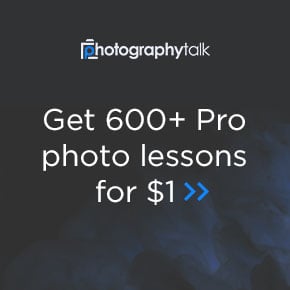- Forum
- Photography and Camera Forum
- Equipment Research, Buying and Using
- Lenses
- A question about UV, Haze, and Clear filters
A question about UV, Haze, and Clear filters
-
 Topic Author
Topic Author
- fotozone
- Photography Hooked
-
- Nikon D3100
- Followers: 49
- Posts: 991
-
Points:
0
Post #35889
-

- Baydream
- Moderator
-
- Canoni/60D/70D/5DmkIII
- Followers: 388
- Posts: 11185
-
Points:
7278
Post #35900
As for size: If you have or are getter lenses of various sizes, the step up would benefit you but you would need different lens caps and may not be able to use lens hoods to control flare. In addition, the larger filters are usually more expensive. For your "protective" lenses, getter filters to match makes sense. If you have 58mm lenses and get a 52mm prime, get a step up for using filters like polarizers that can run into money.
For those hazy horizons, a circular polarizer may help.
Shoot, learn and share. It will make you a better photographer.
fineartamerica.com/profiles/john-g-schickler.html?tab=artwork
Post #35966
Baydream wrote: UV, Sky and Clear filters primarily protect your lens from getting scratched (an expensive injury). With a good quality lens, effects should be minimal. In the odd situation that you might get flare, you can always remove the filter, shoot, then replace it. I have a skylight one and a UV on the other lens.
As for size: If you have or are getter lenses of various sizes, the step up would benefit you but you would need different lens caps and may not be able to use lens hoods to control flare. In addition, the larger filters are usually more expensive. For your "protective" lenses, getter filters to match makes sense. If you have 58mm lenses and get a 52mm prime, get a step up for using filters like polarizers that can run into money.
For those hazy horizons, a circular polarizer may help.
I personally only use the Clears as protection.The sensors on digitals already filter for UV through the filter on it.
-

- Stealthy Ninja
- Moderator
-
- Fuji X stuff and a 1DsIII for some reason
- Followers: 982
- Posts: 16300
-
Points:
6837
Post #36013
The front element is pretty darn strong and unless you want to prevent damage from sand/sea-spray etc. they're probably not necessary.
Personally I have some lenses with them some without (70-200 has one on, the 24-70 doesn't right now, the 14-24 can't and the 50mm 1.4 from Sigma doesn't). Often I forget to put them back on after I use a CP.
Like Baydream suggested, if you do use them, get the best quality you can, to avoid any possible deterioration in the IQ.
Post #36961
Stealthy Ninja wrote: A hood will protect your lens more than a filter ever will. In fact if you drop your lens, the filter might shatter and damage the front element.
The front element is pretty darn strong and unless you want to prevent damage from sand/sea-spray etc. they're probably not necessary.
Personally I have some lenses with them some without (70-200 has one on, the 24-70 doesn't right now, the 14-24 can't and the 50mm 1.4 from Sigma doesn't). Often I forget to put them back on after I use a CP.
Like Baydream suggested, if you do use them, get the best quality you can, to avoid any possible deterioration in the IQ.
Normally for many people this is true but I rock climb with my camera alot and have had some parts of cliffs get past the hoods. I shattered a few filters, now granted it owuld have only been a minor scratch on a lens but, better to shatter a filter.
-

- Baydream
- Moderator
-
- Canoni/60D/70D/5DmkIII
- Followers: 388
- Posts: 11185
-
Points:
7278
Post #36963
Joves wrote:
Stealthy Ninja wrote: A hood will protect your lens more than a filter ever will. In fact if you drop your lens, the filter might shatter and damage the front element.
The front element is pretty darn strong and unless you want to prevent damage from sand/sea-spray etc. they're probably not necessary.
Personally I have some lenses with them some without (70-200 has one on, the 24-70 doesn't right now, the 14-24 can't and the 50mm 1.4 from Sigma doesn't). Often I forget to put them back on after I use a CP.
Like Baydream suggested, if you do use them, get the best quality you can, to avoid any possible deterioration in the IQ.
Normally for many people this is true but I rock climb with my camera alot and have had some parts of cliffs get past the hoods. I shattered a few filters, now granted it owuld have only been a minor scratch on a lens but, better to shatter a filter.
Shoot, learn and share. It will make you a better photographer.
fineartamerica.com/profiles/john-g-schickler.html?tab=artwork
- Forum
- Photography and Camera Forum
- Equipment Research, Buying and Using
- Lenses
- A question about UV, Haze, and Clear filters
Latest Reviews
Nikon’s retro-looking Nikon Zfc is anything but retro. Under its classic body is a host of features and amenities that make it a worthwhile compact mirrorless camera for 2024.
The Canon EOS R50 is one of the newest R-system cameras from Canon. Is it worth your money? Find out all the details you need to know in this comprehensive review.
The Sony FE 70-200mm f/2.8 GM OSS II is Sony’s flagship mirrorless zoom lens. As such, it’s loaded with features and has a top-shelf build quality that makes it a top pick!
The Leica SL2-S is an attractive, premium mirrorless camera with photo and video specs that are sure to impress. And with the legendary Leica name, you know this camera exudes quality!
Latest Articles
Blue hour photography might not be as well known as golden hour photography, but it is every bit as good a time to create epic images of landscapes. Learn how in this quick tutorial!
Nikon’s retro-looking Nikon Zfc is anything but retro. Under its classic body is a host of features and amenities that make it a worthwhile compact mirrorless camera for 2024.
Moving from taking snapshots of your dog to creating beautiful images doesn’t have to be that difficult! Use the tips outlined in this dog photography guide, and you’ll get better results in no time.
Acrylic print photos are a beautiful way to display your favorite images. But they don’t come without some questions. Get all the answers you need about this medium in this guide!
Where do you get your landscape photography inspiration? Is it from masters like Ansel Adams? Or perhaps viewing art from other genres? We’ve got these and a few other sources for you to check out!
The Canon EOS R50 is one of the newest R-system cameras from Canon. Is it worth your money? Find out all the details you need to know in this comprehensive review.
Too often, affordable online printing companies don’t meet your expectations of what a print should look like. But there are some choices that combine affordability with superb quality!
Self-critique is an important component of your journey to improving as a photographer. Use these simple tips about critiquing your work as a means to make faster progress with your art.
















